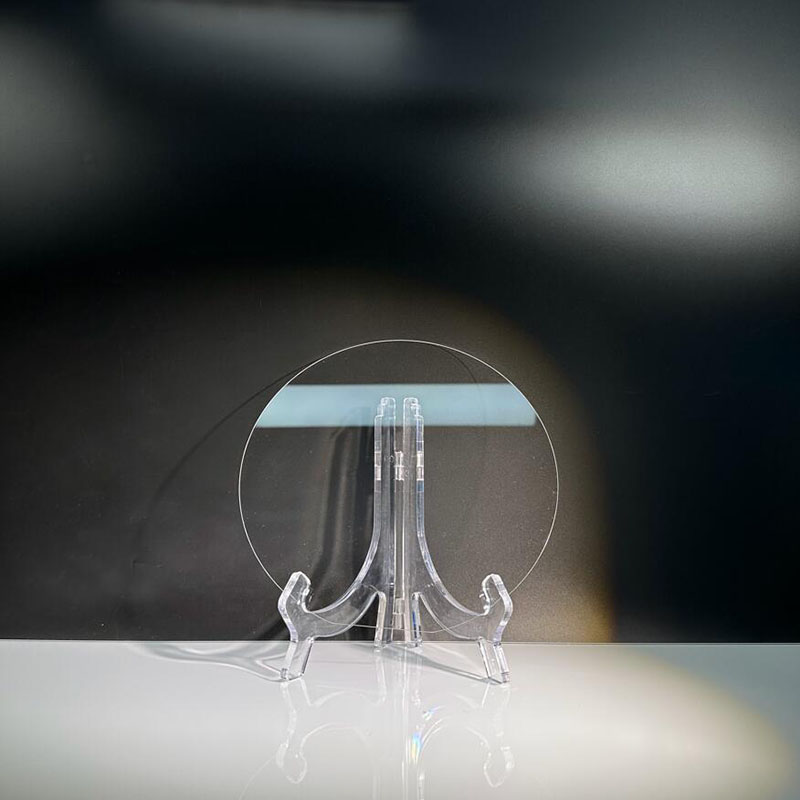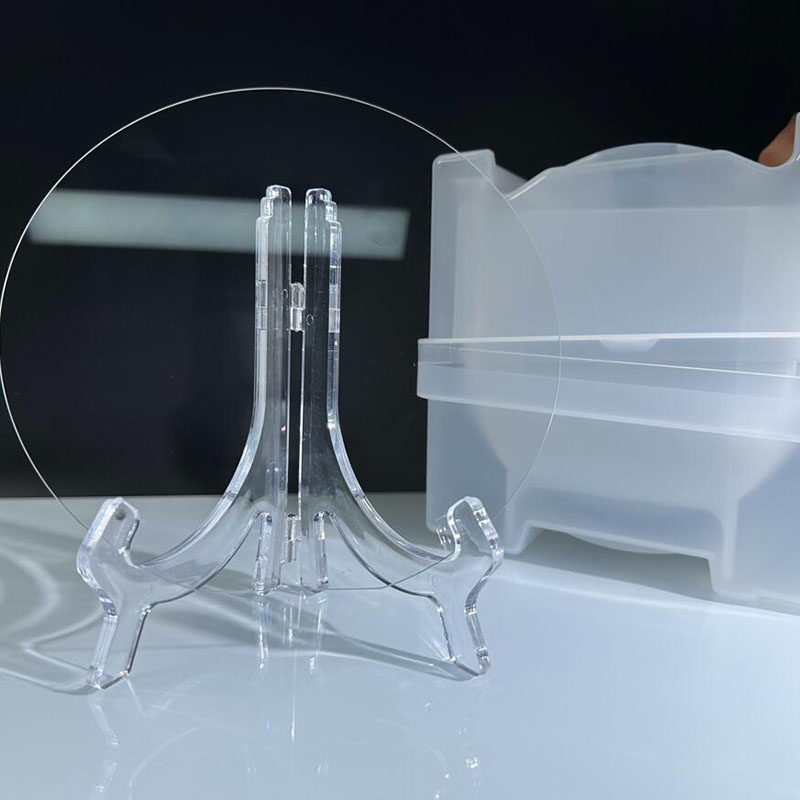Electrode Sapphire Substrate and Wafer C-plane LED Substrates
Specification
|
GENERAL |
||
|
Chemical Formula |
Al2O3 |
|
|
Crystal Stucture |
Hexagonal System (hk o 1) |
|
|
Unit Cell Dimension |
a=4.758 Å,Å c=12.991 Å, c:a=2.730 |
|
|
PHYSICAL |
||
|
Metric |
English (Imperial) |
|
|
Density |
3.98 g/cc |
0.144 lb/in3 |
|
Hardness |
1525 - 2000 Knoop, 9 mhos |
3700° F |
|
Melting Point |
2310 K (2040° C) |
|
|
STRUCTURAL |
||
|
Tensile Strength |
275 MPa to 400 MPa |
40,000 to 58,000 psi |
|
Tensile Strength at 20° C |
58,000 psi (design min.) |
|
|
Tensile Strength at 500° C |
40,000 psi (design min.) |
|
|
Tensile Strength at 1000° C |
355 MPa |
52,000 psi (design min.) |
|
Flexural Stength |
480 MPa to 895 MPa |
70,000 to 130,000 psi |
|
Compression Strength |
2.0 GPa (ultimate) |
300,000 psi (ultimate) |
Sapphire as a semiconductor circuit substrate
Thin sapphire wafers were the first successful use of an insulating substrate on which silicon was deposited to fabricate integrated circuits called silicon on sapphire (SOS). In addition to its excellent electrical insulation properties, sapphire has high thermal conductivity.CMOS chips on sapphire are particularly suitable for high-power radio frequency (RF) applications such as mobile phones, public safety band radios and satellite communication systems.
Single crystal sapphire wafers are also used as substrates in the semiconductor industry for growing gallium nitride (GaN) based devices. The use of sapphire significantly reduces costs as it is about 1/7th the cost of germanium.GaN on sapphire is commonly used in blue light emitting diodes (LEDs).
Use as a window material
Synthetic sapphire (sometimes referred to as sapphire glass) is often used as a window material because it is highly transparent between 150 nm (ultraviolet) and 5500 nm (infrared) wavelengths of light (the visible spectrum ranges from about 380 nm to 750 nm) and has a very high resistance to scratching. Key advantages of sapphire windows
Include
Extremely wide optical transmission bandwidth, from UV to near-infrared light
Stronger than other optical materials or glass windows
Highly resistant to scratching and abrasion (mineral hardness of 9 on the Mohs scale, second only to diamond and moissanite among natural substances)
Very high melting point (2030°C)
Detailed Diagram








